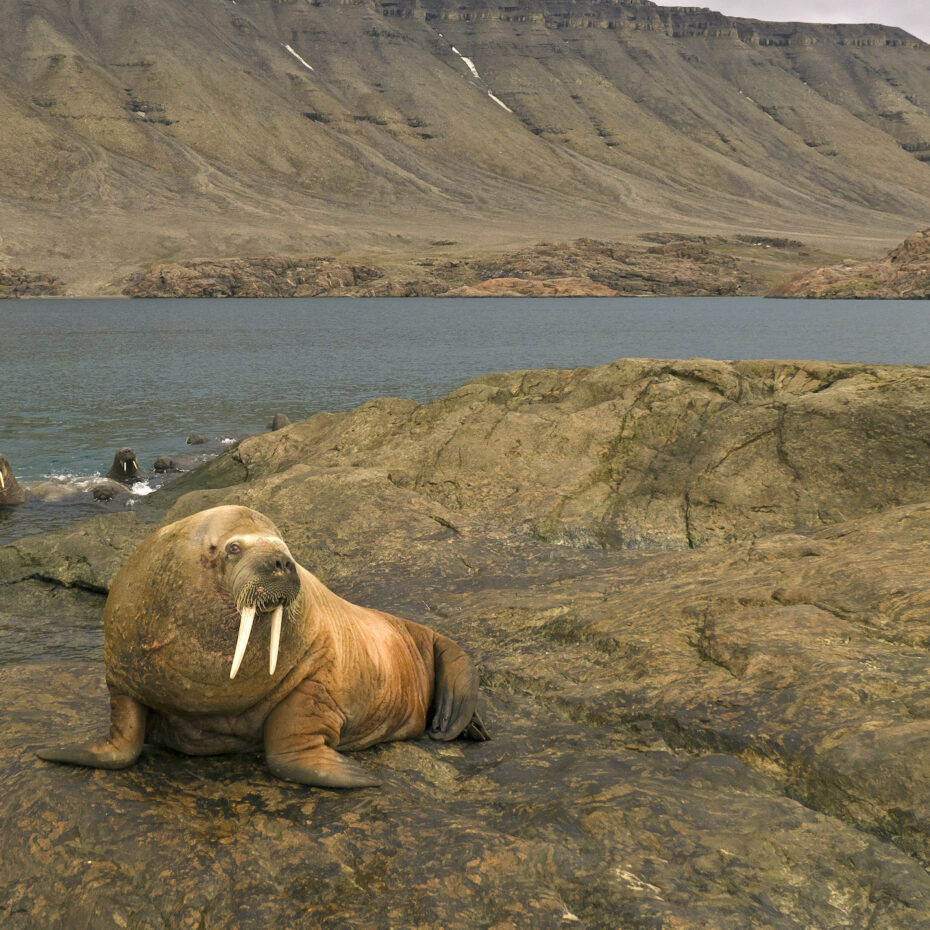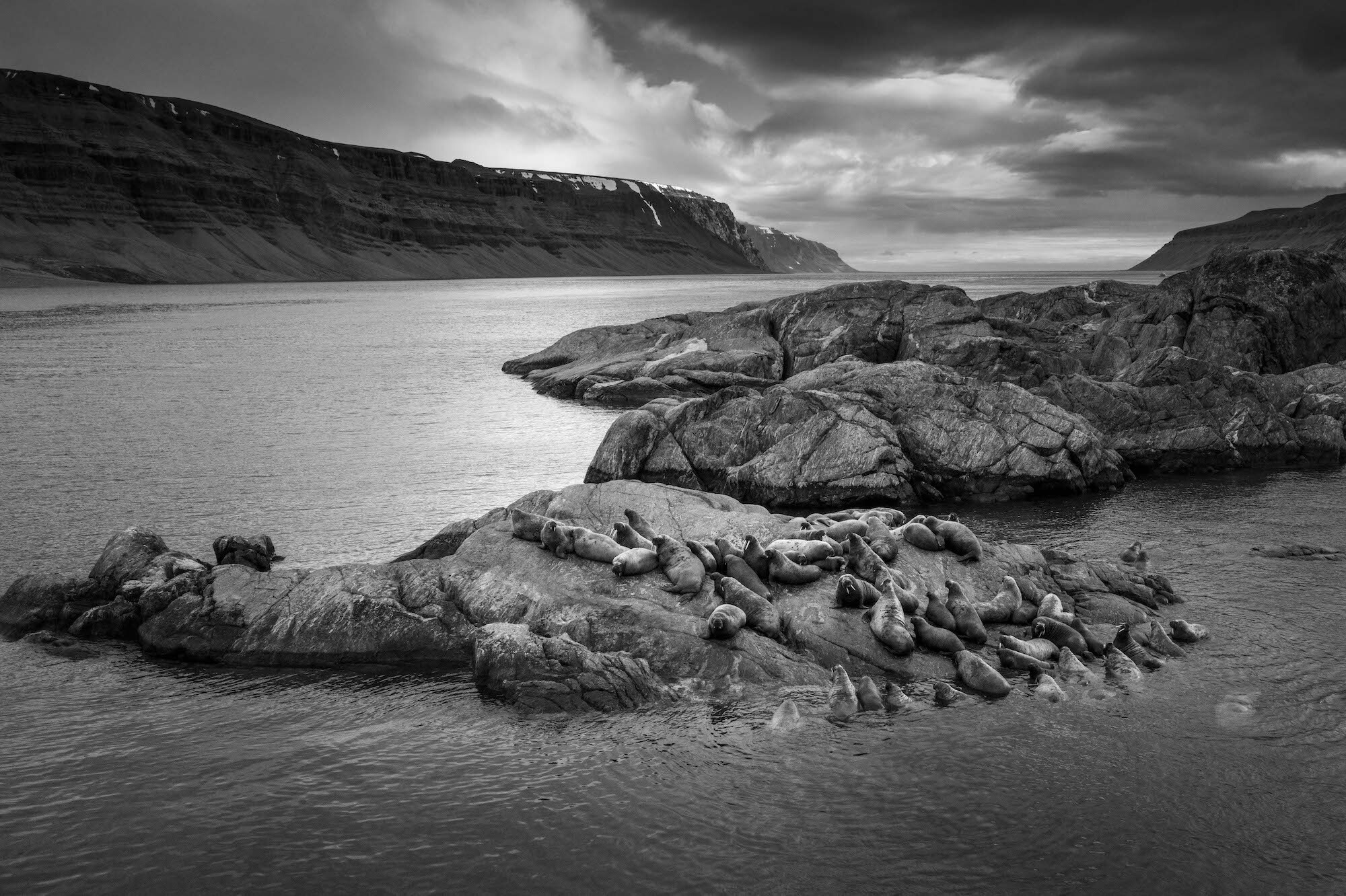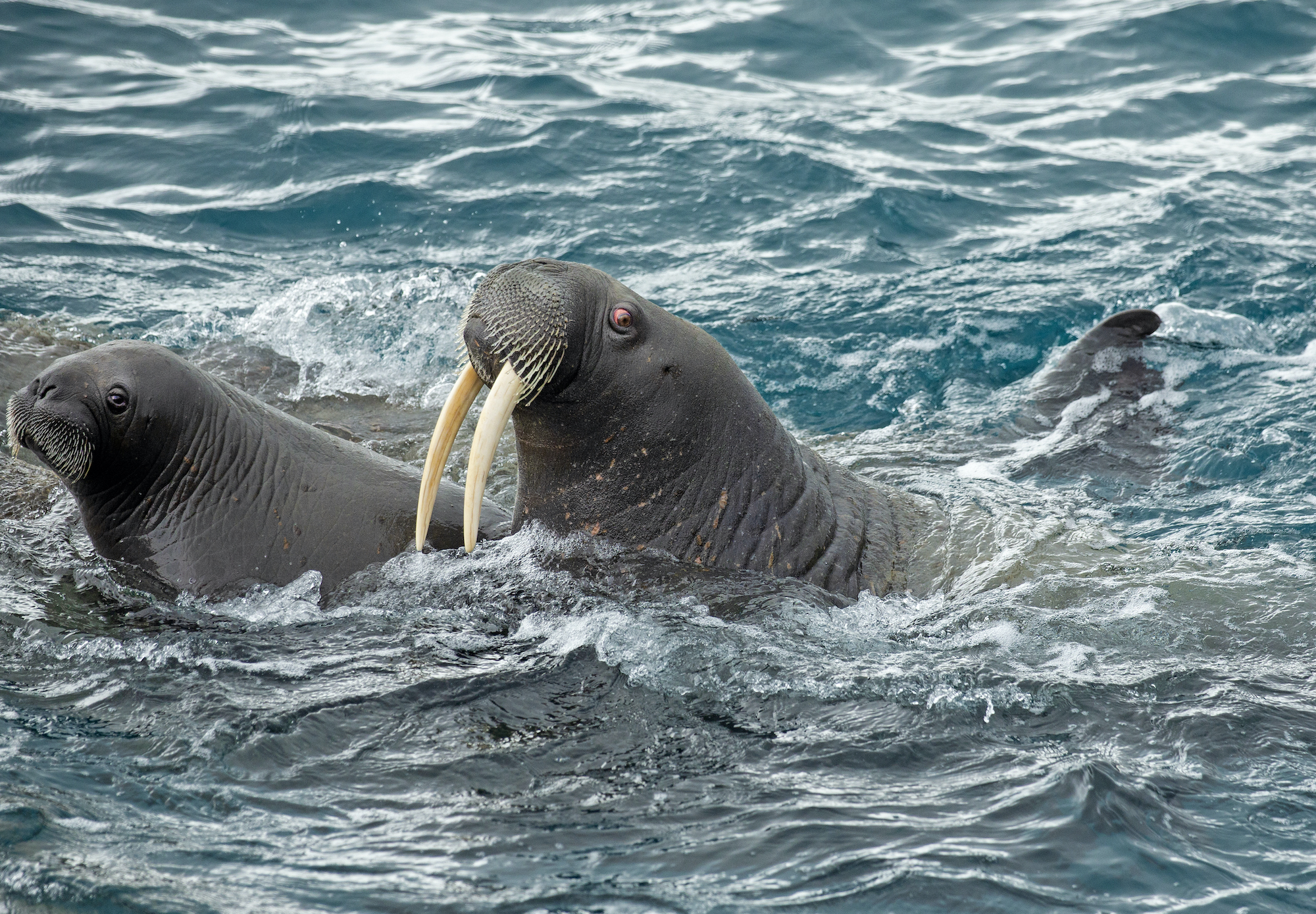
November 22, 2021 | Arctic Watch Wilderness Lodge
FACTS ON WALRUS OF THE CANADIAN ARCTIC
Walrus are the hippos of the Arctic - big, noisy, incredibly powerful animals that seem to almost glide effortlessly through water.
The name walrus originates from Old Germanic or Old Norse language - loosely meaning "horse-whale". They're not incorrect - these massive animals are the sole survivors of the Odobenidae, a family of pinnipeds (animals with flippered feet) and can weigh more nearly 2000kg.
Walrus are divided into two subspecies - the pacific walrus and atlantic walrus. In the central high Arctic where Arctic Watch is located on the Northwest Passage, the walrus we've seen are Atlantic walrus.
Walrus have a thick leather-like skin that protects their bodies. These whiskered and essentially hairless animals have a thick layer of blubber to survive in the cold arctic waters. Males will take on a lumped look in their neck and shoulders. In 1910, a hunter in Russia harvested a 16 foot walrus that had a skin weighing more than 1000 lbs. The body of a walrus is similar to a big seal; a walrus can turn its rear flippers forward and move on all fours.
While it is thought that walrus live between 20 and 30 years in the wild, males typically do not mate until about 15 years old. It is thought that there are roughly 200,000 walrus on earth, with the majority of them being in the pacific family.

Walrus have long been harvested by humans, both for the tusks and meat. In the 19th century, the atlantic walrus were hunted to near-extinction. The Norse manuscript Konungsskuggsja, dating from around 1240 AD refers to walrus. Thule sites in the Canadian Arctic (1000AD) are littered with walrus skulls and ivory tools carved from their tusks. The ivory tusks of a walrus can reach a meter in length and weigh up to 12 lbs. The Thule peoples, ancestors to the modern day Inuit, may have even traded with the vikings in Baffin Bay around 1000AD.
While we see them across the Canadian Arctic, including Ellesmere, Baffin, Devon and Somerset, a short flight across the Northwest Passage from our lodge Arctic Watch is where we recently discovered a walrus colony. These large animals are incredible to observe as they can dive extremely deep when foraging for shellfish.

Walrus are often found in colonies where they not only congregate for social reasons, but for protection as well. Small (quieter) drones are quickly becoming a great way to photograph numbers walrus without disturbing them.
We're here to help.
We understand that booking a trip like this is a big endeavour. Please reach out to us with any questions that you might have regarding your upcoming adventure.



